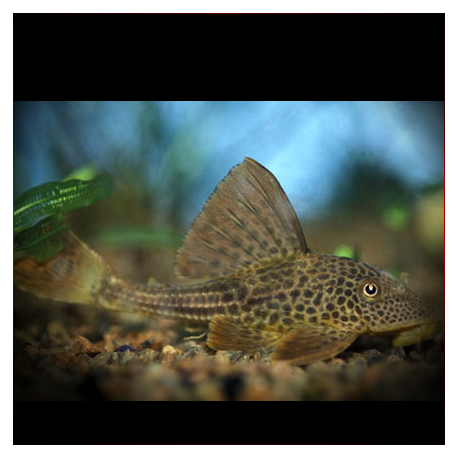More info
Datasheet
| Minimum Tank Size | 243 litres / 64.19 US gallons |
| Maximum Size | 25.0cm / 9.84inches |
| Temperature | 21.0°C / 69.80°F - 27.0°C / 80.60°F |
| Hardness | 5-25ºdH |
| pH | 6.5-8.0 |
General Description
Hypostomus plecostomoides, commonly known as Lda42 or Lda38, is part of the Hypostomus cochliodon complex within the Loricariidae family. These fish distinguish themselves with a hump-backed profile and spoon-shaped dentition, displaying a unique wood-eating behavior that sets them apart as the only known xylophagus fish in existence. They are usually found inhabiting the Rio Orinoco drainage in Colombia and Venezuela.
Aquarium Setup
A minimum tank size of 243 liters is recommended for H. plecostomoides, with a preference for sandy substrate and ample space for swimming. The setup should include large chunks of driftwood for hiding places and as an essential part of their diet, along with dim lighting. While aquatic plants are typically not suitable due to the fish's diet, some surface vegetation can be added. Well-oxygenated water with gentle flow and movement is ideal, maintaining a pH range of 6.5-8.0, hardness between 5-25°dH, and a temperature of 21.0-27.0°C.
Behaviour
These Loricariids exhibit amicable behavior and can coexist with a variety of tankmates, including larger characins, cyprinids, peaceful cichlids, and other catfish. They are surprisingly non-territorial and can be kept in species groups or alongside other peaceful Loricariids. However, smaller species may feel intimidated by their size, so caution is advised when selecting tank companions.
Feeding and Diet
Primarily xylophagous, H. plecostomoides requires access to wood as a food source for proper digestion. They also enjoy consuming greenery like cucumber, courgette, blanched spinach, and sinking dried foods. Their gut contains specialized bacteria that aid in breaking down wood chips, emphasizing the importance of this unique dietary requirement for their overall health.
Reproduction & Dimorphism
While not commonly bred in captivity, these fish spawn in deep holes along river banks during the wet season in their natural habitat. Sexual dimorphism is challenging to discern, but mature females may appear slightly broader when viewed from above as a potential indicator of gender differences.
Habitat and Distribution
In their natural habitat, H. plecostomoides are typically found in and around driftwood within flowing areas of rivers and streams, mimicking their preferred tank setup. They are distributed throughout the Rio Orinoco drainage in Colombia and Venezuela, thriving in environments with suitable access to wood for feeding and hiding opportunities.

